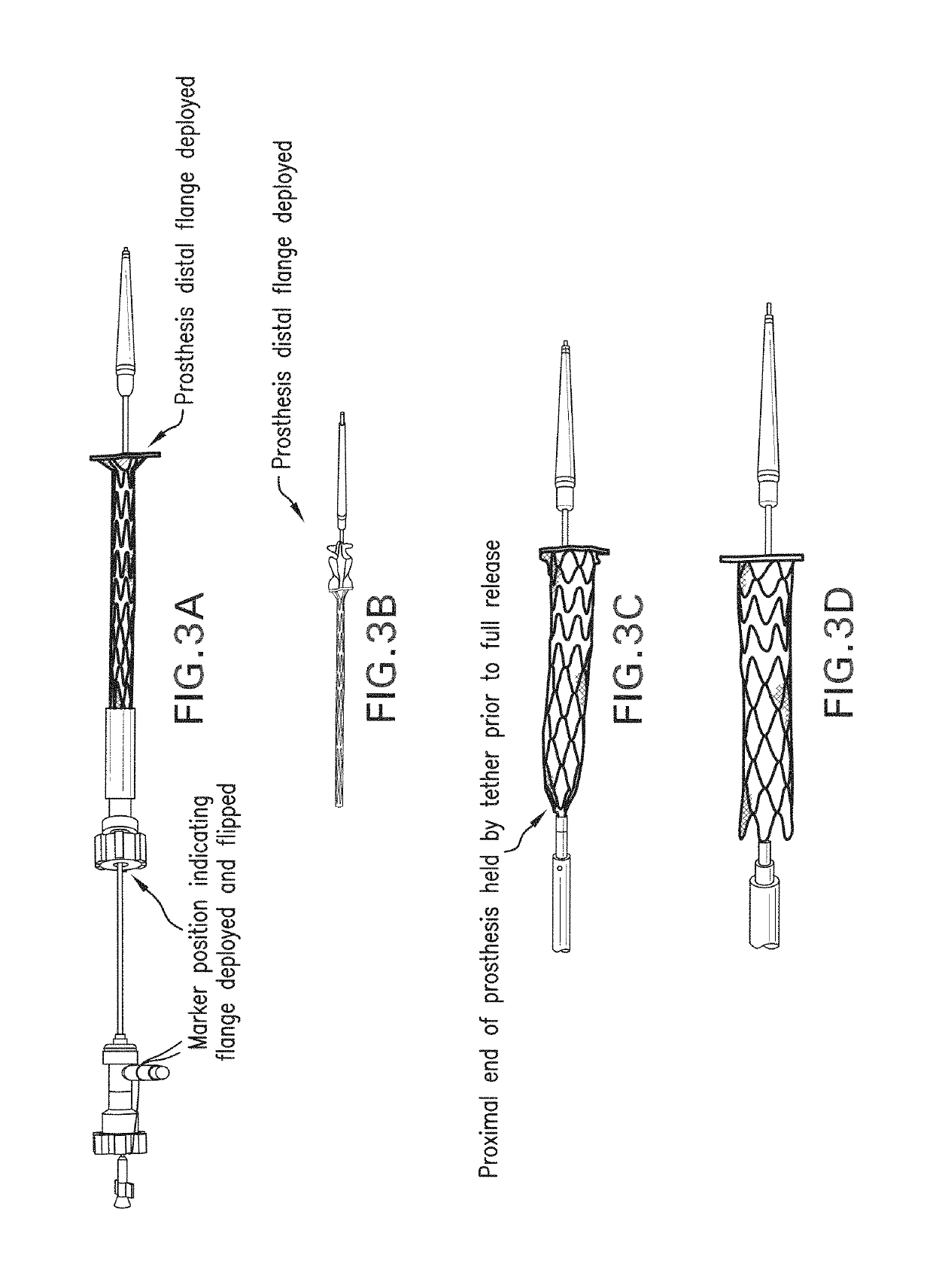Devices and methods for effectuating percutaneous Glenn and Fontan procedures
a technology of percutaneous glenn and fontan, applied in the field of transcatheter devices and methods, can solve the problem of unmet need for a purpose-built cavopulmonary anastomosis device, and achieve the effect of enhancing apposition
- Summary
- Abstract
- Description
- Claims
- Application Information
AI Technical Summary
Benefits of technology
Problems solved by technology
Method used
Image
Examples
Embodiment Construction
[0033]Reference will now be made in detail to the present preferred embodiments of the disclosure, examples of which are illustrated in the accompanying drawings. The method and corresponding steps of the disclosed embodiments will be described in conjunction with the detailed description of the system. The exemplary embodiments illustrated herein can be used to perform Glenn and Fontan procedures, but percutaneously. It will be appreciated, however, that the disclosed embodiments, or variations thereof, can be used for a multitude of procedures involving the connection of blood vessels or other biological lumens to native or artificial structures.
[0034]Embodiments of a disclosed TCBE (Transcatheter Cavopulmonary Bypass Endograft) represent a potential breakthrough for physicians and young patients who require a safe, less-burdensome, and effective alternative to open heart surgery: a percutaneous approach to heal congenital heart failure.
[0035]In particular implementations, the und...
PUM
 Login to View More
Login to View More Abstract
Description
Claims
Application Information
 Login to View More
Login to View More - R&D
- Intellectual Property
- Life Sciences
- Materials
- Tech Scout
- Unparalleled Data Quality
- Higher Quality Content
- 60% Fewer Hallucinations
Browse by: Latest US Patents, China's latest patents, Technical Efficacy Thesaurus, Application Domain, Technology Topic, Popular Technical Reports.
© 2025 PatSnap. All rights reserved.Legal|Privacy policy|Modern Slavery Act Transparency Statement|Sitemap|About US| Contact US: help@patsnap.com



